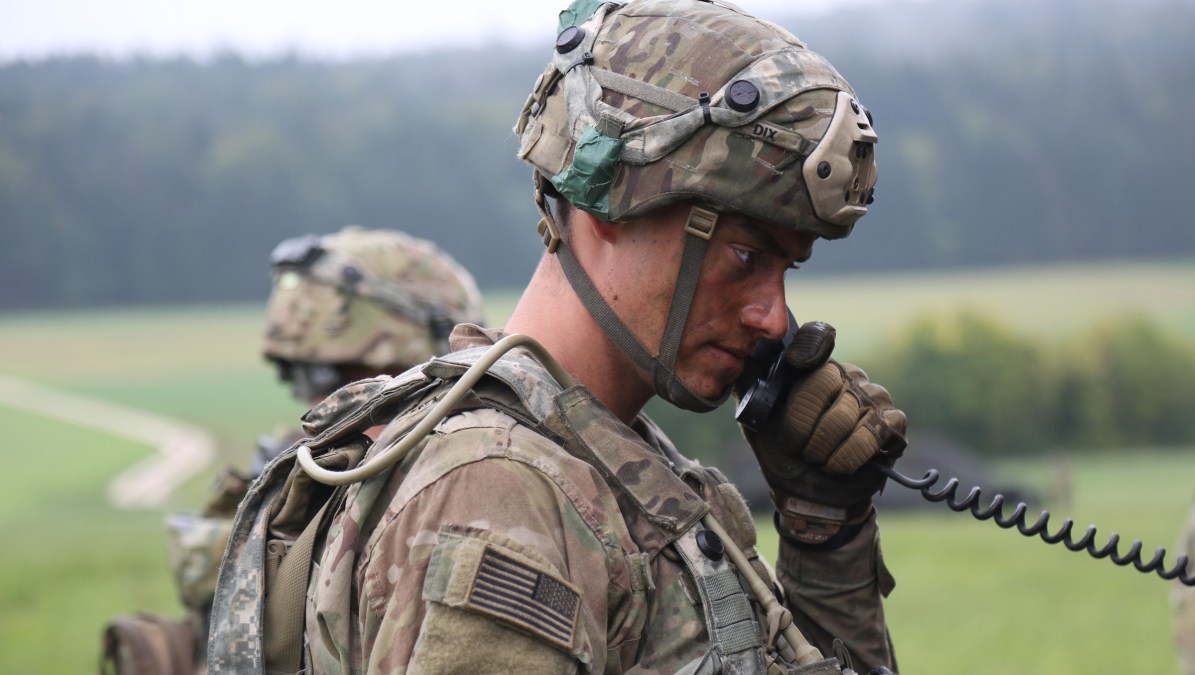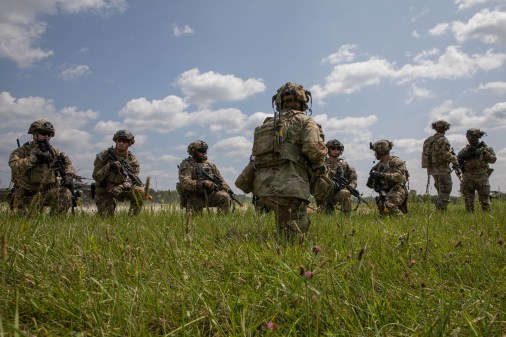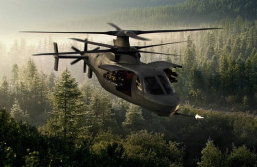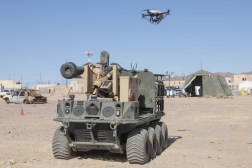Iterative development paradigm shift to fielding network equipment is paying dividends for Army

ABERDEEN PROVING GROUND, Md. and WASHINGTON — About five years ago, the Army began charting down a new path to develop, deliver and field a tactical network that would stand up to disruptions by sophisticated adversaries.
The Army’s then chief of staff, Gen. Mark Milley, testified to Congress in 2017 that the service’s tactical network as it currently stood — the Warfighter Information Network-Tactical — was too “fragile” and “vulnerable” for future battles against sophisticated adversaries. As a result, Milley ordered an entire review of the network.
Since then, the Army developed a strategy it called halt, fix, pivot: discontinuing capabilities that were not survivable, fixing things that could be useful and pivoting to a new paradigm that was threat informed. That led to a multiyear approach involving the incremental development and delivery of new capabilities to its integrated tactical network, which includes a combination of program-of-record systems and commercial off-the-shelf tools. Those “capability sets” now provide technologies to units every two years, each building upon the previous delivery.
Capability Set 21 was primarily designed for infantry brigades, Capability Set 23 is focused on Stryker brigades, and Capability Set 25 is focused on armored brigades.
Currently, the Army is at an inflection point with several concurrent efforts ongoing: fielding Capability Set 21, conducting testing and experimentation with Capability Set 23, and developing design goals for Capability Sets 25 and 27.
Overall, officials say the paradigm shift has led to success, creating culture change in the acquisition and warfighter community while continuing to get buy-in from senior leadership.
“This process puts capability and warfighting over process,” Col. Shermoan Daiyaan, project manager for tactical radios at program executive office command, control, communications-tactical, told reporters at Aberdeen Proving Ground regarding the new approach. “In five or fewer years a lot has changed. I mean, everything has changed, from the way requirements come in to us, the way we help shape requirements, the way the warfighter is truly shaping requirements.”
Senior leadership wants to field capabilities faster and accept more risk across the entire Army. Gabe Camarillo, the undersecretary of the service, has previously lauded the Army’s embrace of new authorities such as Other Transaction agreements and middle-tier acquisition to accelerate the development of new capabilities.
“This is a marked changing pace for where we were at earlier, and significantly have streamlined to what we call our procurement and acquisition lead time throughout the service,” he said at an August event.
“On the digital transformation side, I talked a little bit about the need to shift culture, approach and emphasis to accelerate what our strategy is to get to a unified network, a hybrid accelerated cloud adoption strategy and then of course, enabling data centric operations,” Camarillo told reporters in August. “What we currently see, especially on the tactical side, is that we’ve made a lot of progress to enable acquisition strategies that will allow rapid adoption of upgraded technology through the capability set fielding process.”
Camarillo, along with the vice chief of staff, have initiated a capability portfolio review of the network “to re-baseline our strategy and how do we assess it against current requirements and emerging requirements so that we could gauge our investments in areas where we might be able to prioritize, accelerate or just simply rationalize our efforts,” Camarillo said.
With a lot of different organizations and pots of money, Camarillo said Army leadership wanted to get their hands around the effort in its entirety.
Fundamentally, senior leadership and the warfighting community are accepting more risk on capabilities to try to avoid taking multiple years to field a single system. The service is looking to leverage commercially available technology along with government science and technology investment to experiment with and deliver capabilities on a much faster timeline while getting solider feedback to improve technology in an ongoing manner.
“This notion of iterative development of capabilities, I think is very, very important, because there’s an element of risk that we’re going to have to assume both from how that capability is going to roll out. Is it going to be 100% capable? 80%? 70%? Well, sometimes 70% of something is way better than what you have,” Lt. Gen. John Morrison, deputy chief of staff, G6, said at an event hosted by Defense News at the annual AUSA conference on Wednesday.
“Instead of an episodic soldier touchpoint, how about a routine sustained soldier touchpoint that will drive requirements, that will drive capability development, it will drive procedures and how we conduct operations in ways we probably haven’t thought of,” he said.
Units are now fine accepting less mature capabilities in favor of getting technology faster, officials say.
“Somewhere along the line, people were okay with us rolling in new kit that was not program of record, that didn’t go into this big long [operational test] and people start letting us bring in things,” Daiyaan said. “We get five years to figure it out before it has to roll into a formal program of record. In the past, it was unheard of. Somebody wanted every little slice of that radio to go under some major OT and one big shebang in a big network. We’re changing the culture of our warfighters as much as they’re changing us.”
The capability set approach has also allowed greater flexibility to insert new technology when it becomes available. While there is a roadmap of targeted technologies for each capability set, the Army recognizes there are developments in the commercial world they aren’t aware of. As industry innovates, the Army wants to capture those advancements as opposed to continuing down the same path of development with possibly inferior technology.
“As that next generation of technology comes available commercially … how do we pivot from the next Cap Set to be able to capture and rapidly integrate?” Col. Shane Taylor, project manager for tactical network at PEO C3T, said. “Near peers — they have the same technologies we have. Our advantage is speed and training. How fast can we inject that into a formation?”
Taylor added that it is a more integrated process of learning, which has increased speed.
“It’s what we learned together. The units are involved. We could go slower, more deliberate and give them a very mature solution five years later that would be three years old, or we could go fast and we learned together,” he said. “That’s been the change in paradigm in the approaches.”
The paradigm shift has also brought more entities together in a more holistic manner, Daiyaan said, noting it “made us start to see inefficiencies.”
“In the past, I would deliver my capability on my schedule, according to where my window was,” he said. “But now when we’re looking at a capability set we have someone in [project manager for interoperability, integration and services] that’s just thinking about making sure it all works together. You get a package. It’s almost like walking into the house and the electric is wired together, everything’s WiFi is already turned on, everything is delivered to you as a package.”
Officials described the capability set process as akin to building roads, but for tactical communications and data transmission.
“As we’re going down the capability set execution between 21, 23, 25, I liken it to building that highway. These capability sets are laying the infrastructure foundation,” Nicholaus Saacks, deputy PEO C3T, said. “We’re improving the tactical network infrastructure in order to give commanders a better way to traverse.”
The capability set process allows the Army to keep improving this infrastructure as big ideas, investments or technologies become available.
“We’re doing it a way that’s open so that when we need to add interchanges or … insert new technology and new capabilities, we’re doing it in a way that we can plug those in, so that it’s open and that we can keep competing [with industry] so that down the road whenever that new technology that’s either nascent right now or we haven’t even thought of yet is available and ready to use,” Saacks added. “We can plug it in. Or as the threat evolves, we can we can react and plug in whether it’s a software or hardware solution that counters that directly can get inserted into the network architecture to make it work.”
Industry buy-in
Almost as necessary as getting senior leadership to buy into this new approach is getting industry – which essentially provides the technology — to buy in as well.
Officials described continued responsiveness from industry with the paradigm shift and pushing their innovation efforts based upon signals the Army is sending.
Despite the fact the Army won’t be awarding a single vendor a large program of record in this space for multiple years as was typical previously and favorable for a particular company that came out on top, this incremental and ongoing developmental approach of continual capability insertion allows for more opportunities for contractors.
“What I talk about with industry and it seems to resonate is when you do the 15 year one-and-done competition, it’s great if you win, not great if you lose,” Saacks said. However, “If we are doing these iterations, we keep doing a pulse check on competition. If you are unfortunate and lost that first competition, you have a chance a couple of years down the road … It’s more bites at the apple.”
Taylor noted that this approach forces industry to innovate and iterate because if companies lose, they’re going to have to come back next time with a better design.
The Army has been clear that it won’t always invest its research and development funds into industry’s products. Industry has to bring technologies that have a good deal of maturity because so they don’t need to go through a five- to 10-year iteration.
However, the Army will help industry along. One such way is through the biannual technical exchange meetings, or TEMs. These events, which started around four years ago, gather members of industry, the Army acquisition community, Army Futures Command and the operational community to outline priorities and capabilities to modernize the tactical network.
They differ from the traditional industry days in that they feature panels with acquisition leaders articulating priorities as well as operators explaining what types of capabilities they need to be successful. They are less prescriptive and more descriptive — creating a more collaborative conversation where the Army is acknowledging where they don’t have solutions and imploring industry to innovate to solve problems. While sometimes the Army might be asking for things, industry is also telling the government they should be looking at certain capabilities, which results in more of a two-way discussion.
About half of the TEMs ask for prototype solicitations while the others are intended to help industry shape internal research and development and offer technology roadmaps for future capability sets.
On average, most TEMs have brought together around 200 companies with a third of those being small business. Moreover, there are more Silicon Valley tech companies and small startups in niche markets participating — creating a greater cross-pollination between commercial firms and traditional defense contractors.
Several companies have spoken favorably of this shift in approach.
“The collective perspectives of senior leaders, operational users and product managers are things that would not be easily understood were it not for these TEMs,” Portia Crowe, Accenture Federal Services’ chief data strategist, said in an email. “The level of transparency and presence of the government folks participating should be the model for industry and government interactions.”
Contractors welcomed this change in doing business, highlighting both the frequency of these events as well as how they’re able to get all the relevant players and stakeholders in one place.
“Prior to the TEMs, occasionally you would attend some different types of events, whether they be trade shows and you might get little snippets of information out of trade shows, or obviously constant engagement with the customer,” Tom Kirkland, vice president and general manager of U.S Army and SOCOM broadband communications systems at L3Harris, told DefenseScoop.
In the past, companies were “having these one-off conversations, if you will, between PEOs and ASAALT and PM shops, so you’re trying to piece the puzzle together … just a little bit as you’re trying to inform your technology roadmaps,” Kirkland said.”Now with the TEMs, you have everybody in one place every six months. It’s streamlined how we engage with our customers and made it a little bit easier for us to make decisions.”
The events have also differed from industry days in that they’re more collaborative and provide more forward-looking insights to give industry a better idea of where to invest, participants say.
“One of the big things for industry is where do we invest,” Greg Catherine, who is part of General Dynamics’ business development team, told DefenseScoop. “We don’t want to invest in something that’s already done and we don’t want to invest so far out in the future that the problem will change before the Army ever gets there. The TEMs give me a good balance in terms of targeting where … I should be spending money on R&D.”
Another unique aspect to these events is perspectives from the actual operators during panels.
Crowe noted that while senior leader perspectives are important, nothing beats hearing from the operators talk about the issues they face.
“This helps us think about problems differently, gives us inspiration to find ways to action on their pain points, and gives us information on how to provide solutions that won’t waste everyone’s time,” she said.
For Catherine, it’s important to hear how the operators are currently solving the problem in the interim and what they need longer term. It provides an opportunity to get ahead of the requirements and better understand what the Army’s words mean versus trying to interpret them without any user input.
The events aren’t perfect, however, and contractors noted they’d like to see more agile ways to obtain contracting funding faster, more joint input on panels and more time allotted so industry can attend all the sessions.






